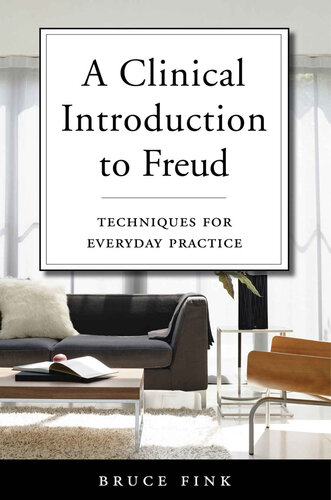

Most ebook files are in PDF format, so you can easily read them using various software such as Foxit Reader or directly on the Google Chrome browser.
Some ebook files are released by publishers in other formats such as .awz, .mobi, .epub, .fb2, etc. You may need to install specific software to read these formats on mobile/PC, such as Calibre.
Please read the tutorial at this link: https://ebookbell.com/faq
We offer FREE conversion to the popular formats you request; however, this may take some time. Therefore, right after payment, please email us, and we will try to provide the service as quickly as possible.
For some exceptional file formats or broken links (if any), please refrain from opening any disputes. Instead, email us first, and we will try to assist within a maximum of 6 hours.
EbookBell Team

0.0
0 reviewsFreud’s central theories explained in the context of modern therapy.
Often overlooked because he is so easy to mock, ridicule, or just plain misunderstand, Freud introduced many techniques for clinical practice that are still widely employed today. Yet surprisingly, there has never been a clinical introduction to Freud's work that might be of use to students and professionals in their everyday lives and careers. Until now.
Bruce Fink, who is his generation's most respected translator of Lacan's work and a profound interpreter of Freud's, has written the definitive clinical introduction to Freud. This book presents Freud in an eminently usable way, providing readers with a plethora of examples from everyday life and clinical practice illustrating the insightfulness and continued applicability of Freud's ideas.
The overriding focus is on techniques Freud developed for going directly toward the unconscious, illustrating how we can employ them today and perhaps even improve on them. Fink also lays out many of Freud's fundamental concepts―such as repression, isolation, displacement, anxiety, affect, free association, repetition, obsession, and wish-fulfillment―and situates them in highly applicable clinical contexts.
The emphasis throughout is on the myriad techniques developed by Freud that clinicians of all backgrounds and orientations can draw upon to put in their therapy toolbox, whether or not they identify as "Freudians."
With references ranging from Star Trek and the Moody Blues to hard drives and unicorns, Bruce Fink's elegant writing brings Freud into sharp focus for clinicians of all backgrounds. To readers who ask with an open mind "Does this approach allow me to see anything that I had not seen before in my clinical work?" this book will offer many new insights.